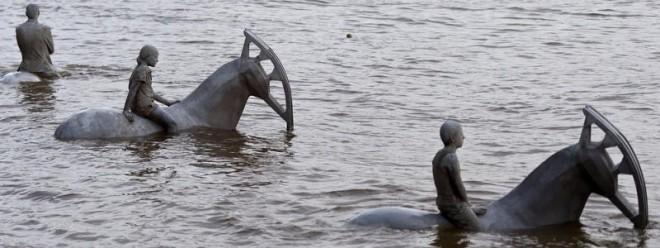Commissioned for the Totally Thames festival, "Rising Tide" depicts four life-size horses and their riders on the banks of the Thames River in London.
At high tide, it's easy for the work of art, made of marine cement and steel, to go unnoticed, barely cresting above the water.
HIGH TIDE:
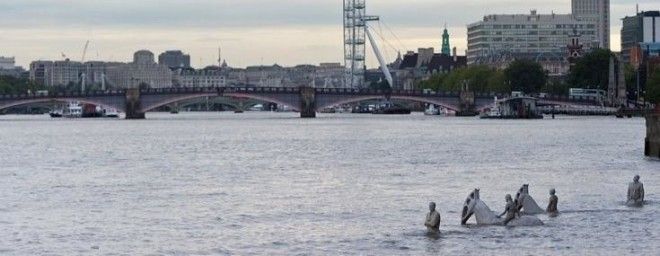
But twice a day the water recedes, and Taylor's innovative sculpture reveals itself.
LOW TIDE:

And here's the whole process in a handy GIF time-lapse:
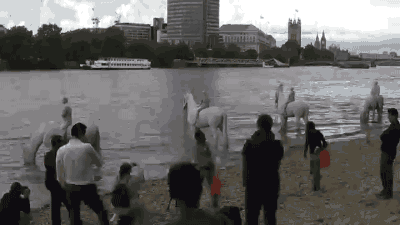
This is not Taylor's first foray into water-logged artwork; he's an underwater sculptor.
Yes, an underwater sculptor, a very real profession (that it's not too late to pursue).
Taylor began his career in sculpture on dry land but was inspired by his childhood exploring coral reefs in Malaysia and became a diving instructor, naturalist, and underwater photographer.
In 2006, he created the world's first underwater sculpture park, located near the shores of Grenada. He's since opened a second underwater museum off the coast of Cancún, Mexico.
But Taylor's sculptures aren't just art for art's sake. He hopes his work will send a strong message about climate change.
For over 10 years, Taylor's work has been inspired by the environment and conservation, and "Rising Tide" is no exception.
Two of the riders, dressed in suits, represent politicians and captains of industry, groups Taylor believes aren't doing enough to slow climate change. The remaining two riders are children, representing the generation who will suffer the consequences of their inaction.
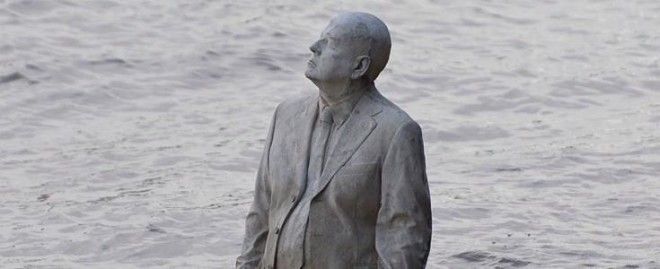
The horses' heads have been replaced by the heads of oil-well pumps (often referred to as "horse heads"), a not-so-subtle nod
Advertising
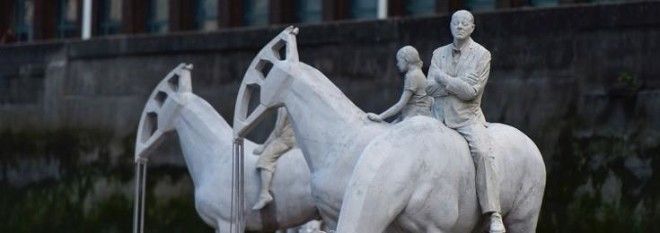
The piece stands less than a mile from the Houses of Parliament, where lawmakers make key decisions about climate policy.
Taylor hopes they take notice. In an interview with The Guardian, he described the symbolism in more detail: "Working in conservation, I am very concerned with all the associated effects of climate change and the state of peril our seas are in at the moment. So here I wanted a piece that was going to be revealed with the tide and worked with the natural environment of the Thames, but also alluded to the industrial nature of the city and its obsessive and damaging focus just on work and construction."
Art, music, and film have a way of bringing important issues to life in a way statistics and news stories often can't.
Hopefully, works of art like "Rising Tide" can get people talking about the harm our habits, policies, and inaction are doing to our environment.
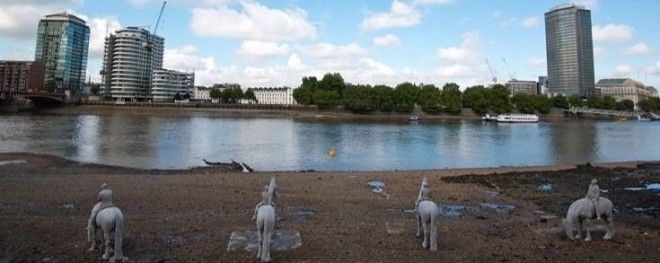
If you're in London, see "Rising Tide" before it closes Sept. 30. Just be sure to check this handy schedule so you can see the sculpture in its entirety at low tide.
Here's a 15-second time-lapse of the tide process happening in reverse:
